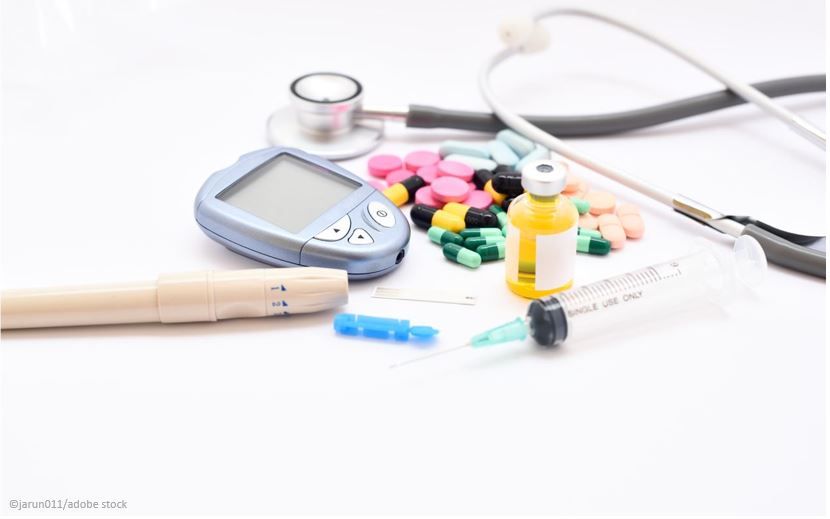- Clinical Technology
- Adult Immunization
- Hepatology
- Pediatric Immunization
- Screening
- Psychiatry
- Allergy
- Women's Health
- Cardiology
- Pediatrics
- Dermatology
- Endocrinology
- Pain Management
- Gastroenterology
- Infectious Disease
- Obesity Medicine
- Rheumatology
- Nephrology
- Neurology
- Pulmonology
SGLT-2 Inhibitors, GLP-1 Receptor Agonists not Cost-effective as First-Line T2D Therapy
When modeled as first-line therapy vs metformin, treatment benefit was significantly outweighed by cost for both classes.

To be cost-effective as first line therapy for type 2 diabetes (T2D) (vs metformin) the price of sodium-glucose cotransporter-2 (SGLT-2) inhibitors and glucagon-like peptide-1 (GLP-1) receptor agonists would need to fall “by at least 70%,” according to a modeling study published online October 3 in the Annals of Internal Medicine.
The simulation modeled lifetime incidence, prevalence, mortality, and costs associated with the 2 newer classes of antidiabetes drugs and metformin in US patients with untreated T2D.
Current clinical guidelines recommend SGLT-2 inhibitors and GLP-1 receptor agonists as second-line treatment for patients with T2D, with class selection based on the presence of comorbidities, including chronic kidney disease, heart failure, and atherosclerotic cardiovascular disease. Whether the clinical benefits of either class as initial therapy would outweigh the financial cost has, until these findings, been unclear.
According to study authors, led by Neda Laiteerapong, MD, MS, associate director for the Center for Chronic Disease Research and Policy at University of Chicago Medicine, the “major driving factors” underlying the poor cost effectiveness of these medications as choice for first line treatment were “their high costs and a decrease in quality of life associated with injections.”
For the study, Laiteerapong and colleagues created a population simulation model based on the United Kingdom Prospective Diabetes Study, Outcomes Model version 2, which was developed primarily to assess lifetime benefits of diabetes-related interventions. It is particularly suited to economic evaluations by estimating changes in various outcomes (ie, life expectancy, quality-adjusted life years [QALY]) when risk factors are changed.
Laiteerapong and colleagues modified the model to incorporate effects of SGLT-2 inhibitors and GLP-1 receptor agonists on glucose control as well as factors such as blood pressure, weight, and cardiovascular risk and also input US drug costs.
Using data from the US National Health and Nutrition Examination Survey (2013-2016), the researchers identified US adults aged ≥18 years with self-reported diabetes or an HbA1c >6.5% who were treatment-naïve. The cohort had an average age of 55 years and 55% were women. Average duration of T2D was 4.2 years and 36% of participants had recorded complications of T2D. The research team applied the model to 493 people with T2D who were eligible for first-line glucose-lowering medication.
FINDINGS
The model projected that compared to initial treatment with metformin, first-line use of SGLT-2 inhibitors and GLP-1 receptor agonists would improve undiscounted life expectancy by 3.0 and 3.4 months, respectively.
The impact of each class on discounted quality adjusted life expectancy, however, was affected by route of administration, according to the investigators, with first line SGLT-2 inhibitor use increasing the life expectancy measure by 33 days and GLP-1 receptor agonist use reducing it by 22 days. The authors cite the need to inject the latter medications as the reason for the wide discrepancy.
The researchers report a projected absolute reduction in lifetime rate of macrovascular complications of 4.4% with SGLT-2 inhibitors and 5.2% with GLP-1 receptor agonists vs initial treatment with metformin but only a marginal reduction (0.1%) in incidence of microvascular outcomes.
Cost, implications
Based on a “willingness-to-pay” threshold of <$ 150 000 per QALY, first-line SGLT-2 inhibitor therapy would need to cost $1800/year or $5/day while oral GLP-1 receptor agonists would only become cost effective at a price of $2100/year or $6/day.
Laiteerapong and team calculate that to reach those costs would require price reductions of at least 70% for SGLT-2 inhibitors and 90% for oral GLP-1 receptor agonists.
Although costs of the now-branded drugs may come down as they come off-patent, the authors note that even a generic version of a GLP-1 receptor agonist that became available in 2017 is still relatively expensive and that potentially “it may take decades for medication prices to drop low enough to become affordable.”
“Without external incentives, limited access to these drug classes will likely persist […] as will further diabetes disparities—for decades into the future—because of differential access to care due to insurance (for example, private vs. public), which often tracks race and ethnicity,” the authors conclude.
Reference: First-line therapy for type 2 diabetes with sodium-glucose cotransporter-2 inhibitors and glucagon-like peptide-1 receptor agonists: a cost-effectiveness study. Ann Intern Med. Published online October 3, 2022; doi:10.7326/M21-2941
